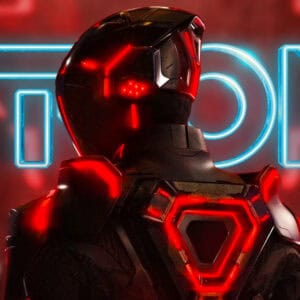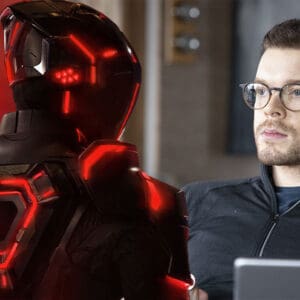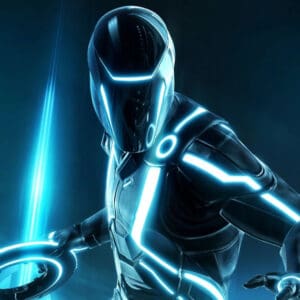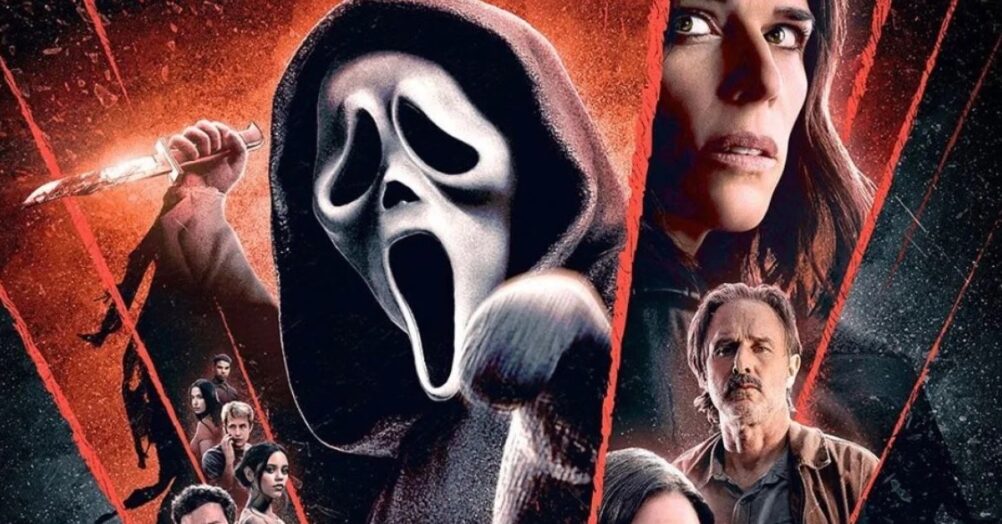
It’s exceedingly unheard of for a studio to put a big-budget sequel of a major property in the hands of a director who has never worked on a feature film before but that’s exactly what happened with Joseph Kosinski. He was directing commercials, rather impressively, but had never worked on a film when he was chosen to shepherd TRON: LEGACY into theaters. After years of work, the film finally releases this week. In a JoBlo.com mega-interview, Genevieve and JimmyO sat down with Kosinski to talk a little bit more about the film and his approach to the material.
Joseph Kosinski
You basically got this sequel going. How did that come together?
Sean Bailey called me into a meeting three years ago, said, “TRON: it’s a Disney property, they’ve been trying to find some approach in this thing for 15 years. What would your approach be? Just generally speaking – very, 50,000-foot level.” And I said, “I would be interested in kind of competing with The Matrix and trying to make this thing about a digital world that looks like the real world but then you find out it’s digital. I would really want to embrace the original film and find a way to go back to that world and have it be a completely different experience, in terms of the physicality, the photo-realism – I just wanted it to feel visceral, I didn’t want it to feel virtual. But at the same time I wanted it to be instantly recognizable with TRON. So, you know, when the first images flick up, even though it’s something – it’s an evolved version and it’s more realistic than it ever was you know instantly it’s the world of TRON and we’re going back in.”

So this idea of a server that had been left alone for 20 years and it evolved on its own and become this hyper-real simulation of the world that we all remember was kind of my approach, my first idea. Sean and I went into the studio and I said, “Let me – you know, we can talk about this all day. You guys have Adam and Eddie who can start writing the script but what’s the point? For a movie like TRON you guys really need to see and feel what this world looks like. So let me build a three-minute piece that gives us a hint of – a little bit of action – a sense of the vibe and the tone, which is the important thing because I wanted to make sure that they were up for the tone of movie I wanted to make. And let’s hint at the narrative; let’s do something that just hints at the storyline we’re interested in and I’ll make it as – I’ll treat it as if it’s a short film or a trailer for a movie that doesn’t exist yet. And if you guys like it, maybe we can show it publicly, which I think at that point they thought was kind of ridiculous – showing test footage before there’s a movie greenlit, before there’s a script.
But we made that short piece. I made it with a small group of artists, like eight guys, here at Digital Domain in the commercial division, and we slaved over for like six months and showed it Disney and convinced them to show it at Comic Con in 2008 and we dropped it at the end of the Witch Mountain panel without announcing it and based on the reaction, it kind of rippled out when someone grabbed a piece on their cellphone. Disney saw that there’s a desire for this movie out there, you know, it’s not just geeks who remember TRON. It resonates at a bigger level than I think they realized and that’s what kind of gave us that push to go into production.
Was there any concern initially about being too tied to or limited by the original movie and the reactions to it?
There were absolute concerns, like: do people care? Do people care about TRON anymore? Is it just 12 dudes who run the TRON website? Is that the only people who are going to go? And I think that’s what the footage did, is it showed there was a bigger – there was a desire to see this movie that maybe they [think] didn’t exist. I think I felt it because I’m of that generation. I remember seeing it at 10 years old. Everyone who saw it – I think, like Steve says – the only people who got the original TRON were under 14 years old at the time when it came out. Everyone else it went over their head.
So the test did exactly what it was supposed to do. It showed the studio there was a desire to make this film and from their point – and what Sean and I told the studios was that this was a father-son story and that’s what Disney’s about: those kinds of family films. And that was the core of our story. It just happened to be in this incredible world and we were gonna push the envelope in every way and that’s what that the head of Disney at the time told me. He’s like, “We want you to push Disney with this.” And that’s a very powerful thing to say to a director is like, “All right, the studio wants me to push it. That’s great. I’m going to do it.” So we did. Or are trying to, I should say.

Is there one aspect of the film that you feel is you putting a marker on it to say, “This is TRON for the new generation.”
I think the level of my desire to make something that felt realistic. Steve Lisberg always brings it up. He’s like, “Your desire – That’s such a your-generation desire to make it feel real.” But I wanted to build as many sets as possible. I wanted the suits to actually be physically illuminated. I just – because it’s a movie about a virtual world, I wanted the movie to feel so real I didn’t want any of it to feel virtual. I wanted it to have momentum and danger so I kind of leaned hard the other way. I made it as practical as possible. And I just think you can feel that when you watch it and in the performance of the actors. It’s like walking onto a set on costume, there’s no replacement for that. And I think in the performances you see that there’s – you get a better performance as opposed to doing that safehouse scene in a blue room. I don’t know how you – what actor is able to pull that off because it’s a hard thing. So my desire to make this film feel as shot as possible. I wanted it to feel like we took cameras into the world of TRON and shot it from the inside.
Is that why you choose to make the 3D more of a window into the world rather than coming out at the audience?
Exactly. That portal idea, the idea of that movie screen becomes a window into this world. And it seems like the idea of shooting the movie in Real 3D seems like an obvious choice now but we made this choice a year and a half before Avatar came out. So at the time it was actually a big decision to make because it does cost a lot more money to shoot in Real 3D and finish all your visual effects shots from two different points of view. We’re doing no conversion on this film. This film is pure 3D from start to finish. It’s a hard way to do it but I think in the end when you see the Real 3D footage, you appreciate it.
What is it, or who is it, that really influenced the style and direction of the film? Especially as a director coming off of commercials.
Well, my background is in design. I went to school to be a mechanical engineer or an aerospace engineer, then I was going to be a jazz saxophonist, then I thought I was going to be an architect so I went to architecture school so I’ve always had this kind of creative side and technical side that was always kind of fighting over which one I wanted to be and directing ended up being kind of the perfect combination so I think the look of the film is a combination of all those disciplines that I studied and also all those films that I grew up with: 2001, Blade Runner, the original TRON, Star Wars, A Clockwork Orange, absolutely. So this film just kind of lent itself to be the perfect opportunity for me to take everything I loved about these kind of movies and combine it into one aesthetic and what I really liked about this movie is the whole world is designed by Kevin Flynn, it’s designed by one man, so it’s a real opportunity, you don’t get to do that in movies like this, where you can say that the whole world was designed from one point of view so the vehicles, the sets, the costumes, everything had to feel like it was all linked together and done by one POV. And I got to be that person on this movie which was a blast for me as a designer.
And you brought in Daft Punk. Where did that come from?
I invited them to have breakfast with me at the 101 Cafe in Hollywood and we had a pancake breakfast together – pancakes and coffee – and we talked about TRON, we talked about film, we talked about great film scores – everything from Bernard Herman to John Carpenter and a desire to create a classic film score that sounded like nothing else. A combination of orchestral music and minimal electronics in a really natural, blended way. And we both shared that desire to do that so we’ve been working on the score for two years, maybe – it’s almost been three years now since I first met them. And it was really developed in parallel with the movie so you’ll see when you see the film that the music and the visuals are so linked that you can’t imagine one without the other. So it’s been a blast. They’ve been amazing collaborators. I think they’re geniuses and I’m really proud of the score. I can’t wait for people to hear it.




















Follow the JOBLO MOVIE NETWORK
Follow us on YOUTUBE
Follow ARROW IN THE HEAD
Follow AITH on YOUTUBE